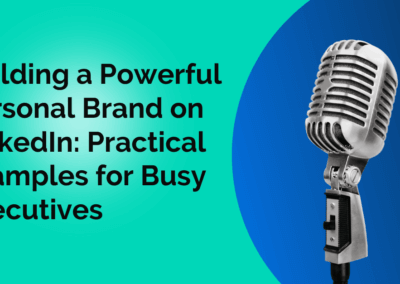The content your company releases is generating leads. This is a major success! However, if you can’t pinpoint why you’re having this success, lead generation could halt as quickly as it began.
Enter buyer personas. According to HubSpot, a buyer persona is “a semi-fictional representation of your ideal customer based on market research and real data about your existing customers.” Buyer personas help you identify not just what creates leads, but why. If you know why something is happening, it’s repeatable — and having a repeatable process is the formula for long-term success.
According to a report from CoSchedule, marketers who have a documented marketing strategy are 538% more likely to report success than those who don’t. Creating buyer personas is a crucial piece to that puzzle.
A buyer persona has many different components, all of which help your marketing and sales teams get inside the minds of your ideal customers.
Take Efficiency Ed — he’s an example of a buyer persona. His profile includes everything from job title to personal objectives.

One of the most crucial components to a buyer persona are pain points. These are things the buyer persona struggles with — which your company has solutions for.

Categories of a buyer persona can be added or taken away based on the needs of your company and how much information you have on your customers. The key is to have enough information for your marketing and sales teams to understand how to effectively interact with leads and bring them closer to the bottom of the sales funnel.
How exactly do documented buyer personas get you closer to this goal? The answer is three-fold:
1. Sales and Marketing Alignment
Your marketing team is elated with the number of marketing qualified Leads (MQLs) in their database. Eager to move them to the next phase of the buyer’s journey, the marketing team forwards the leads to the sales team. After sales evaluates them, 90% are discarded. Why? The sales and marketing teams were not aligned.
When marketing and sales work together, there is increased marketing ROI, sales team efficiency, and visible top-line growth. Achieving this goal can be daunting, but documenting buyer personas is a good place to start.
Established buyer personas empower both teams with a common blueprint for who they are targeting and give insights on how to do it. For example, if sales data on your company shows 70% of customers fall into the Efficiency Ed category, marketing can shift their efforts to create more content this persona finds helpful. The result is a greater number of relevant leads.
This conclusion is logical, but the evidence is in the data. “For organizations that are aligned, there’s a 67% higher probability that marketing generated leads will close.” Buyer personas help streamline the buyer’s journey so sales qualified leads (SQLs) are not the hope, but the expectation.
2. Establishes Important Data to Collect
An Efficiency Ed, your primary persona, found your blog. He reads a post and sees your perfectly placed CTA, “Download our exclusive ebook now and access industry secrets.” All He needs to do is fill out a form for full access. Name? Standard. Email? Standard. Zip code? This doesn’t seem necessary. Work phone, home phone AND cell phone? He leaves the page and you’ve just lost your chance with a potential lead.
How do you ask enough questions so you can siphon off the MQLs to send to sales but not so many that you drive business away? Buyer personas can guide you. There aren’t hard and fast rules to which fields are okay to put on a form and which ones aren’t. Instead, figure out what fields you NEED to sort contacts by persona. For example, if your business and personas are not location specific, asking for a zip code is probably overkill.
Efficiency Ed is a COO so he wants to make things run efficiently. Adding a field that asks, “What is your goal?” will help you section off the Efficiency Eds from others. In this case, you might not need anything beyond name, email, and goal. It must be emphasized that this specific set of fields is not a rule, but is determined on a case-by-case basis in regards to your personas.
Having documented buyer personas helps you ask the right questions at the right time so you can attract as many contacts– and therefore as many leads– as possible.
3. Identifies How Buyers Can Be Influenced
Buyer personas are how you access a lead’s mind and are therefore a framework on how to relate to them. Efficiency Ed is stressed because his company uses too many systems and it slows the team down. He knows this is leading to lost revenue and wasted time. If your company has documented buyer personas you can understand what the lead (or customer) is struggling with and empathize.
Buyer Personas lay the foundation for building trust, which results in more sales and leaves the customer delighted with their investment in you.
The Bottom-line:
Buyer personas give your company direction. Defining them helps you decide who you should market your product to and how you should do it. With these two questions answered, everything else just falls into place.
Knowing how to define your buyer personas, or even just figuring out where to start, is challenging. We want to help you get there so you can start seeing results. Download our buyer persona checklist to enable a streamlined marketing and sales process built to help you reach your goals.




